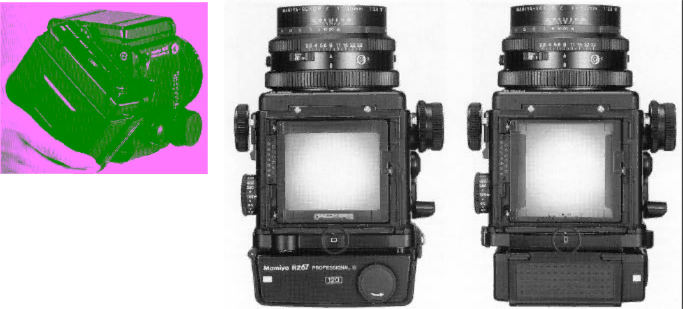
The Revolving Back
The Vertical and Horizontal Formats | Change in Viewfinder Format |
Before attempting to revolve the back, set the
Revolve the back clockwise or counter- clockwise until it securely clicks at a 90° turn. If the back is not in a "click position", the shutter release button will not function.
The
As the revolving back is rotated, the viewfinder format automatically changes from horizon- tal to vertical, or vice versa. This is accomplished by viewfinder masks which are coupled to the revolving back. Additionally, when viewed from the top, a small rectangle appears at the upper edge of the Film Holder, Visible at a glance, this rectangle acts as a reminder, indicating whether the holder has been set for the vertical or horizontal format.
* Be sure to rotate the Film Holder gently, as | *Do not revolve the back while pressing the |
undue use of force can result in damage to | shutter release button. When using a cable |
the camera. | release or |
| be correctly adjusted; otherwise the shutter |
| release button may remain depressed. |
29